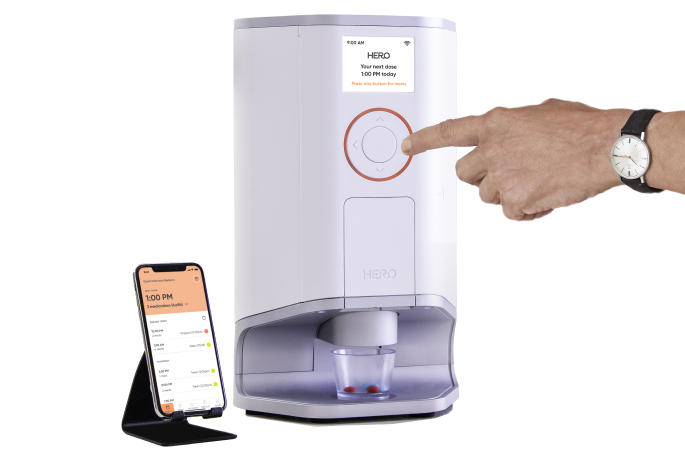Stroke Prevention: How to Reduce Your Risk for Stroke

About the Author: Rohit Jayakar MD is a physician in the field of Physical Medicine & Rehabilitation, currently at Stanford Health Care. He specializes in treating musculoskeletal injuries, neurological injuries, and chronic pain.
Stroke is the world’s second leading cause of death. In the United States alone, someone has a stroke every 40 seconds, causing one death every 4 minutes. This results in approximately 700,000 American strokes and 165,000 stroke-related deaths each year.1 Moreover, stroke is considered to be the leading cause of long-term disability -- of those who survive a stroke, almost 50% become chronically disabled in some way.
Beyond individual costs for the stroke patient, the societal costs of stroke are extremely significant. Between 2014-2015, the United States paid approximately $46 billion in stroke-related costs, encompassing direct healthcare costs (hospitalizations, outpatient visits, therapies), as well as the indirect costs of missed days of work.2
Thanks to medical advancement and improved treatment of underlying conditions, the age-adjusted likelihood of stroke has declined with time. Nevertheless, understanding the risk factors for a stroke is key in lowering the likelihood of this major medical event.
What is a Stroke?
A stroke is a sudden neurological deficit that lasts for over 24 hours, caused by an occlusion or rupture of blood vessels supplying the brain. If the symptoms last for under 24 hours, it is called a transient ischemic attack (TIA); these so-called “ministrokes” are named differently as TIAs are also called ministrokes, and they are named differently than strokes because they do not leave any permanent brain damage or deficits.
Strokes are categorized into two main groups: ischemic strokes and hemorrhagic strokes.
Ischemic stroke (85%)
Ischemia is defined as the lack of blood flow to a certain body part.4 In turn, ischemic strokes are caused by an occluded artery, causing brain tissue to not receive enough oxygen. These account for 85% of all strokes, and fall under one of two subtypes:
- Thrombotic stroke: These occur when arteries in the brain become blocked due to a buildup of plaque along their walls. The blood clot, also known as a thrombus, is made up of fats, cholesterol, and other substances. Once a thrombus is formed, it can restrict blood flow and deprive the patient's brain tissue of oxygen, leading to neurological deficits.
- Embolic Stroke: These occur when a clot from elsewhere in the body gets dislodged and stuck in the arteries of the brain, causing lack of blood flow and neurological deficits. The most common area of clot formation is in the heart, particularly if a patient has atrial fibrillation, a condition leading to an abnormal heartbeat.
Hemorrhagic stroke (15%)
Accounting for 15% of all strokes, hemorrhagic strokes are caused by a blood vessel bursting and bleeding into brain tissue. This is most commonly due to uncontrolled hypertension (high blood pressure), but they can also be caused by ruptured aneurysms or abnormal connections between arteries and veins, known as arteriovenous malformations (AVMs). While ischemic strokes can sometimes have a gradual onset of deficits, hemorrhagic strokes usually have a very rapid progression, with nausea, vomiting, and a severe headache.
Complex med schedule? We solved it.
Hero’s smart dispenser reminds you to take your meds and dispenses the right dose, at the right time.

What are the Risk Factors for Stroke?
Now that we understand what strokes entail and their different subtypes, we will review their associated risk factors.
Non-modifiable risk factors
There are many risk factors for stroke that simply cannot be avoided by the patient. For both men and women, age is the single most important risk factor for stroke worldwide, with the risk of a stroke more than doubling each decade after age 55. Furthermore, males are more at risk than females, and Black patients are twice as likely to have a stroke compared to White patients Genetics has been implicated in stroke risk as well; if there is history of a stroke in family members, one has up to a 30% higher risk.8
Modifiable risk factors
Fortunately, there are several treatable risk factors when it comes to stroke risk. In order of importance, they include the following:
- Hypertension (high blood pressure) is the most important risk factor for both ischemic and hemorrhagic strokes, increasing a patient's chance of having a stroke sevenfold!8 Recent CDC estimates state 45% of United States adults have hypertension, including 75% of adults over 60 years of age.7
- Heart disease is another important risk factor that comes in many forms. When it comes to stroke, valvular disease and arrhythmias such as atrial fibrillation carry the biggest risk, increasing the risk of embolic strokes fivefold.8
- Diabetes can double stroke risk, and can be notoriously difficult to manage.9
- Hyperlipidemia (high cholesterol) is also independently associated with increased stroke risk.
Addressing Risk Factors for Stroke Prevention
Taking Medications
Managing the risk factors above can be extremely challenging and usually requires consistent use of several classes of medications:
- Hypertension: Common antihypertensive medications include ACE inhibitors (e.g. lisinopril), diuretics (e.g. furosemide), and calcium channel blockers (e.g. amlodipine).
- Heart disease: Antiarrhythmics (e.g. amiodarone) and beta-blockers (e.g. metoprolol) are often used for atrial fibrillation, but in addition antiplatelets (e.g. aspirin) or blood thinners (e.g. warfarin) may be needed depending on other risk factors. For those with atrial fibrillation, stroke risk can be estimated here using a CHA2DS2-VASc score calculator. This tool also provides recommendations for antiplatelet versus anticoagulation.
- Diabetes: In addition to lifestyle changes, treatment of diabetes includes oral agents, most commonly metformin, and may require insulin administration for more severe cases.
- Hyperlipidemia: Statins (e.g. lipitor) are the most common medication class to treat hyperlipidemia, but other oral agents are available for those who cannot tolerate a statin. For those unsure if they should be on statin therapy, the American College of Cardiology developed an atherosclerotic cardiovascular disease (ASCVD) score to estimate the risk of having a future heart attack or stroke, which can be calculated here.
Most people with these conditions are asymptomatic, so they often are not motivated to take medications, particularly if the medications have side effects. This lack of prescription-taking, also known as medication non-adherence, is a healthcare problem leading to 125,000 U.S. hospitalizations each year, as well as $100-$300 billion in annual U.S. healthcare costs. Unfortunately, having a stroke or heart attack is often the wake up call people need to realize the importance of medication adherence.
Fortunately, new technology has made managing multiple medications a breeze and has helped improve medication adherence for a variety of health conditions. Companies like Hero, for example, have developed a medication dispenser that automatically sorts and dispenses medication on time, tracks adherence, and can even help with medication refills. Tools like these can put medication adherence on autopilot, as people no longer have to consciously remember to take medications and track their use.
Lifestyle modifications
Apart from medication management, lifestyle modifications are also key in taking steps towards stroke prevention. Everyone has heard that eating a “balanced diet” and exercising is important, but how crucial are these lifestyle changes in preventing strokes?
Diet
There is countless debate on what diet is “healthiest,” as new diets are promoted and propagated every few months. However, as with most things, there are individual factors - health conditions and concerns, goals, exercise habits, digestion, and more - that must be considered.
That being said, when it comes to stroke, the diets with the strongest evidence for preventing strokes are the Mediterranean diet and the DASH diet (Dietary Approaches to Stop Hypertension).5 Both of these diets are similar in that they largely consist of vegetables, fruits, healthy fats (nuts, seeds), and whole grains while limiting red meat.
Exercise
The optimal amount of exercise is another heavily debated topic. The CDC recommends at least 150 minutes of moderate physical activity (brisk walking) or 75 minutes of vigorous physical activity (running) per week, in addition to 2 days a week of muscle strengthening. Exercise not only improves muscular and cardiovascular health, but also helps with stress, mood, sleep, and the management of chronic conditions such as high blood pressure, high cholesterol, and diabetes.
In my opinion, the CDC guidelines are the bare minimum. Particularly for those with sedentary jobs, I usually recommend developing an individualized, sustainable workout regimen for at least one hour per day and increasing intensity no more than 10% a week to ensure injuries are not sustained. Again, the exact type of exercise (weightlifting, HIIT, yoga, running, swimming, etc) depends on people’s current physical condition, ailments, and fitness goals.
Other Lifestyle Changes
Lastly, cigarette smoking, alcohol abuse, and cocaine use are all associated with a higher stroke risk. Therefore, attempts to stop use of these substances can also substantially reduce the chance of having a stroke. Smoking alone increases stroke risk by two to four times. Fortunately, smokers can rest assured that if they successfully stop smoking, their risk will be reduced to that of a nonsmoker after five to ten years.6
Implementing Change Today
Although strokes are and will continue to be an enormous burden of disease globally, it is important to remember they are often preventable by managing underlying treatable risk factors using the guidelines in this article.
Addressing risk factors often comes with a lot of medications, but tools like Hero’s automated dispenser can save you time and energy by streamlining this process. Moreover, modifying diet and exercise habits to improve cardiovascular health goes a long way, not just for stroke risk but for most facets of life.
Whether medication compliance or diet and exercise routines, changing habits can be exceedingly difficult and is often a very gradual process, but the payoff is worth it. By striving to improve your health on both these fronts, you can greatly reduce your chance of experiencing a stroke.
References
- Ingall T. Stroke--incidence, mortality, morbidity and risk. J Insur Med. 2004;36(2):143-52. PMID: 15301227.
- Donkor ES. Stroke in the 21st Century: A Snapshot of the Burden, Epidemiology, and Quality of Life. Stroke Res Treat. 2018;2018:3238165. Published 2018 Nov 27.
- Virani SS, Alonso A, Benjamin EJ, Bittencourt MS, Callaway CW, Carson AP, et al. Heart disease and stroke statistics-2020 update: a report from the American Heart Association. Circulation. 2020;141(9):e139-e596
- “Ischemia.” Merriam-Webster.com Dictionary, Merriam-Webster, https://www.merriam-webster.com/dictionary/ischemia. Accessed 8 Mar. 2021.
- Foroughi M, Akhavanzanjani M, Maghsoudi Z, Ghiasvand R, Khorvash F, Askari G. Stroke and nutrition: a review of studies. Int J Prev Med. 2013 May;4(Suppl 2):S165-79. PMID: 23776719; PMCID: PMC3678213.
- Shah RS, Cole JW. Smoking and stroke: the more you smoke the more you stroke. Expert Rev Cardiovasc Ther. 2010;8(7):917-932.
- Ostchega Y, Fryar CD, Nwankwo T, Nguyen DT. Hypertension prevalence among adults aged 18 and over: United States, 2017-2018. NCHS Data Brief, no 364. Hyattsville, MD: National Center for Health Statistics. 2020.
- Boehme AK, Esenwa C, Elkind MS. Stroke Risk Factors, Genetics, and Prevention. Circ Res. 2017 Feb 3;120(3):472-495. PMID: 28154098; PMCID: PMC5321635.
- Mankovsky BN, Ziegler D. Stroke in patients with diabetes mellitus. Diabetes Metab Res Rev. 2004 Jul-Aug;20(4):268-87. PMID: 15250030.
The contents of the above article are for informational and educational purposes only. The article is not intended to be a substitute for professional medical advice, diagnosis, or treatment. Always seek the advice of your physician or other qualified clinician with any questions you may have regarding a medical condition or its treatment and do not disregard professional medical advice or delay seeking it because of information published by us. Hero is indicated for medication dispensing for general use and not for patients with any specific disease or condition. Any reference to specific conditions are for informational purposes only and are not indications for use of the device.



